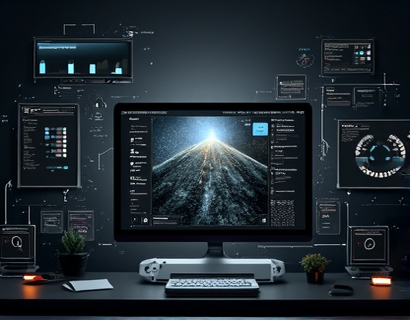Maximizing Civic Engagement: Leveraging Real-Time Data for Transparent Governance
In the digital age, the intersection of technology and governance has opened new avenues for civic engagement. Real-time data access stands as a pivotal tool in transforming how governments operate and how citizens participate in the democratic process. This article delves into the transformative power of real-time data in governance, highlighting the critical role of open data in fostering informed citizen participation and enhancing accountability in democratic processes.
The concept of open data in governance is not new, but its implementation through real-time data platforms has revolutionized the way information is shared and utilized. Open data initiatives aim to make government information freely available, accessible, and usable by anyone. When combined with real-time data, these initiatives provide a dynamic and up-to-date resource that can significantly enhance civic engagement.
Real-Time Data: A Game Changer for Transparency
Real-time data refers to information that is collected, processed, and made available immediately as it occurs. In the context of governance, this means that citizens can access the latest updates on government activities, policies, and decisions as they happen. This immediacy breaks down the traditional barriers of information latency, allowing for a more transparent and responsive government.
The impact of real-time data on transparency is profound. By providing up-to-the-minute information, governments can demonstrate their commitment to openness and accountability. Citizens can monitor policy implementations, budget allocations, and public service deliveries in real time, reducing the potential for misinformation and increasing trust in public institutions.
Enhancing Civic Participation through Open Access
Open access to real-time government data is a cornerstone of informed civic participation. When citizens have direct access to current data, they can make more informed decisions about their involvement in the democratic process. This access empowers individuals to engage in meaningful discussions, hold officials accountable, and contribute to policy-making.
For instance, real-time data on public spending can help citizens track how tax dollars are being used, enabling them to advocate for more efficient and effective use of resources. Similarly, real-time updates on environmental data can mobilize communities to take action on local issues such as pollution and climate change.
Case Studies: Successful Real-Time Data Initiatives
Several cities and countries have successfully implemented real-time data platforms to enhance civic engagement. One notable example is the city of Barcelona, which has developed an open data portal that provides real-time information on various city services, including public transportation, waste management, and energy consumption. This portal not only informs citizens but also encourages them to contribute ideas and solutions for improving city services.
Another example is the Open Data Initiative in New York City, which offers a comprehensive platform for accessing real-time data on city operations. The platform includes datasets on budget expenditures, crime statistics, and public health metrics. These data resources have been instrumental in fostering a culture of transparency and citizen involvement in governance.
Real-Time Data and Emergency Response
One of the most critical areas where real-time data can make a significant difference is in emergency response and disaster management. During crises, timely and accurate information can save lives and resources. Real-time data platforms can provide updates on the status of emergencies, resource allocation, and evacuation routes, ensuring that both authorities and citizens are well-informed.
For example, during natural disasters, real-time data on weather patterns, flood levels, and road conditions can help emergency services coordinate their efforts more effectively. Citizens can access this information to make informed decisions about their safety and to assist in community response efforts.
Challenges and Considerations
While the benefits of real-time data in governance are clear, there are challenges and considerations that must be addressed. Data privacy and security are paramount concerns. Governments must ensure that real-time data platforms are designed with robust security measures to protect sensitive information and maintain public trust.
Additionally, the quality and reliability of real-time data are crucial. Inaccurate or incomplete data can lead to misinformed decisions and erode trust in government. Therefore, continuous monitoring and validation of data sources are essential to maintain the integrity of the information provided.
Building a Collaborative Governance Model
Real-time data platforms can serve as a foundation for a collaborative governance model where government, citizens, and other stakeholders work together towards common goals. By providing a transparent and accessible platform for data, these initiatives foster a culture of collaboration and shared responsibility.
Citizens can use real-time data to identify areas for improvement and propose solutions, while government officials can leverage this feedback to make data-driven decisions. This two-way flow of information and ideas can lead to more effective and responsive governance.
Encouraging Citizen Engagement
To maximize the impact of real-time data on civic engagement, it is essential to create user-friendly interfaces and provide educational resources. Governments should design platforms that are accessible to all citizens, regardless of their technical expertise. Intuitive dashboards and clear explanations of data can help non-technical users understand and utilize the information effectively.
Moreover, educational campaigns can empower citizens to use real-time data for civic engagement. Workshops, online tutorials, and community events can teach individuals how to access and interpret data, and how to use it to advocate for their interests and contribute to public policy.
The Role of Technology in Civic Engagement
Technology plays a vital role in bridging the gap between government and citizens. Mobile applications, web portals, and social media platforms can all be leveraged to disseminate real-time data and facilitate citizen interaction. These tools not only make information more accessible but also enable real-time feedback and dialogue between citizens and government officials.
For instance, mobile apps can provide citizens with instant updates on public services, allowing them to report issues such as potholes or broken streetlights directly to the relevant authorities. This immediate feedback loop enhances the responsiveness of government services and fosters a sense of ownership among citizens.
Measuring Impact and Continuous Improvement
To ensure the effectiveness of real-time data initiatives, it is crucial to establish metrics for measuring impact. Governments should track key indicators such as the number of data downloads, user engagement levels, and the number of citizen-initiated projects or policy changes resulting from data insights.
Regular evaluations and feedback mechanisms can help identify areas for improvement and ensure that the real-time data platform continues to meet the needs of citizens. By iteratively refining the platform based on user input and data performance, governments can maximize the benefits of real-time data in governance.
Conclusion
The integration of real-time data into governance represents a significant step towards more transparent, accountable, and participatory democracy. By providing citizens with immediate access to government information, real-time data platforms empower individuals to engage more deeply in the democratic process. This shift not only enhances civic participation but also builds trust and collaboration between citizens and government officials.
As more cities and countries adopt real-time data initiatives, the potential for transformative change in governance becomes increasingly evident. Embracing this technology is not just a choice but a necessity for modern, responsive, and citizen-centric governance. Join the movement towards a more transparent and participatory future by supporting and utilizing real-time data in governance.










































